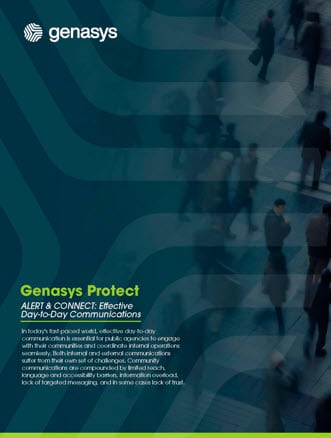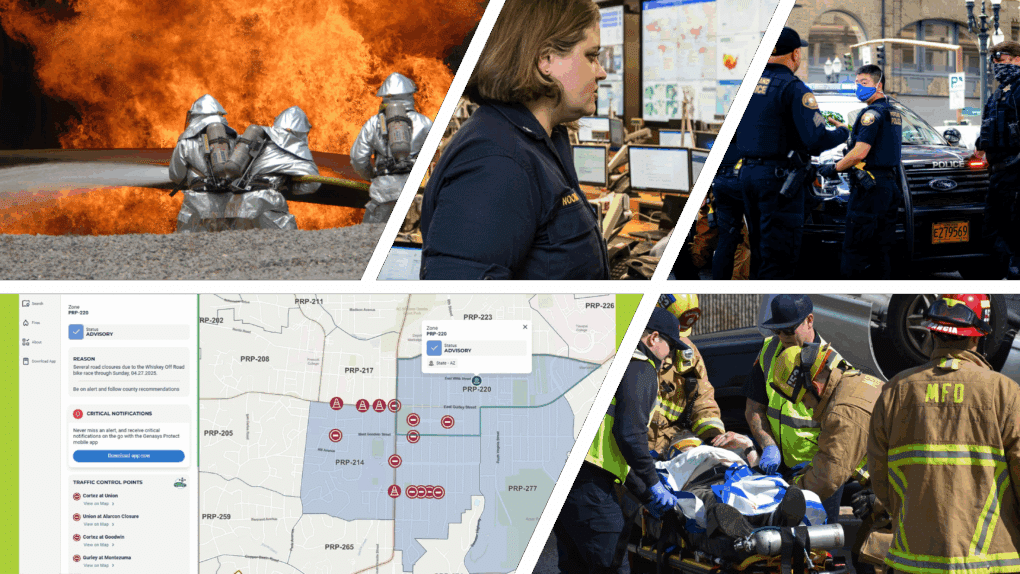By Adam Stewart, Head of Marketing at Genasys Inc.
Emergency services are perpetually challenged by the need for precise and rapid communication. In today’s complex and fast-paced environment, agencies often grapple with outdated systems and fragmented communication channels, leading to critical delays and information gaps, when what they need is real-time response planning and cross-department or cross-agency collaboration.
Addressing these challenges requires a nuanced understanding of the latest communications technology solutions and strategic planning to ensure cohesive and effective emergency responses when they’re needed most.
Unifying Forces with Cross-Agency and Multi-Jurisdictional Synergy
In the world of emergency response, integrated planning and collaboration across agencies, departments, and jurisdictions is not just beneficial—it’s imperative. Selecting critical protective communications software that facilitates this integration can be a game-changer—whether through an emergency communications and evacuations platform or a compliance-based messaging app that allows responders to communicate on a shared channel.
By harnessing technology that supports cross-functional communication, responders can operate within a unified framework, ensuring that critical information flows seamlessly between different entities. This approach not only streamlines operations but also significantly enhances situational awareness and operational efficiency across the board.
Micro-Targeting in Emergency Communications
In an emergency, incident command and first responders need precision in the midst of chaos. With focused messaging, law enforcement and fire personnel can micro-target communications to all responding agencies and the public to manage zones in real-time.
Planning and decision-making processes that incorporate micro-targeting enable agencies to send specific messages (including pre-determined messages) to defined groups, ensuring that the right information reaches the right people at the right time. This precision capability not only mitigates the risks of miscommunication but also bolsters the efficiency and effectiveness of emergency responses.
Enhancing Speed and Accuracy
The essence of effective emergency management lies in the ability to make and communicate rapid decisions. Traditional reliance on roads and geographical markers often hinders this process. Add to that, road construction, road closures, or changing infrastructure, and decision-making becomes even more crucial. By focusing on technology that is driven by zone identification, emergency services can leapfrog these limitations, enabling faster and more accurate decision-making.
Accelerated Decision-Making Through a Zone-Based Approach
Traditional response strategies often rely on static geographic markers or road-based navigation, which can lead to inefficiencies in critical situations. By adopting emergency communications software that supports zone-based planning, agencies can enhance their operational response and reduce the time to action during emergencies.
With zone-based technology, responders can optimize their response using geospatial intelligence to manage an emergency, including all evacuation efforts. Transitioning to a zone-based model accelerates decision-making by identifying specific areas of concern quickly. This method allows for more targeted communications and resource allocation, enabling responders to act swiftly and effectively.
Integrating Solutions for a Safer Tomorrow
As we delve into the intricacies of protective communications and emergency communications software, it’s clear that the synergy between planning and decision-making is crucial for advancing public safety.
Through integrated cross-agency efforts, zone-based decision-making, and targeted communication strategies, emergency services can achieve a level of responsiveness and efficiency that is paramount in saving lives and protecting communities.
With Genasys EVAC, a zone-based response planning and evacuation management software with both first responder and citizen apps, and CONNECT, a robust messaging app made specifically for law enforcement and fire, communications integrity and reliability are assured for both internal and public management before, during, and after an emergency crisis.
Summing Up
The future of emergency response is not just about adopting new technologies but integrating them into a cohesive, strategic framework that enhances every aspect of protective communications. As emergencies seem to be getting more involved and far-reaching, tools like EVAC and CONNECT allow incident command to initiate and communicate plans quickly during the initial attack phase when it’s needed most.
Contact Genasys to learn more about our protective communications suite of solutions including EVAC and CONNECT.

















